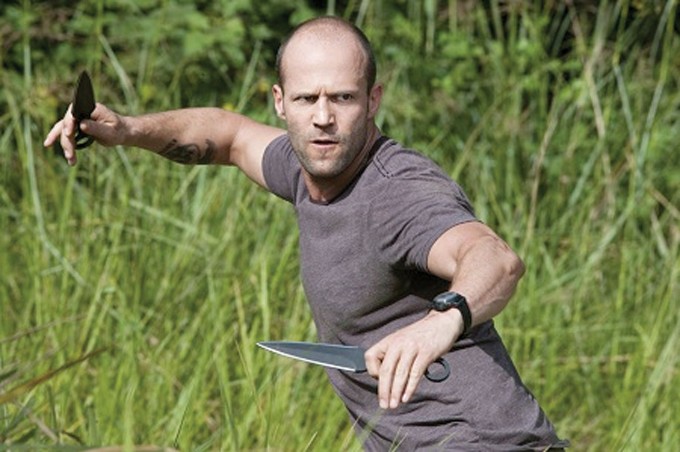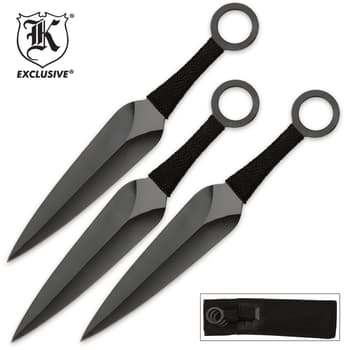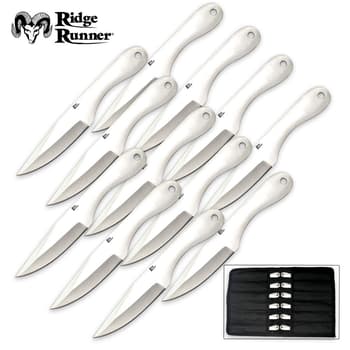How to Throw Knives Accurately
The manner in which the knife is held is paramount for efficiency, accuracy, and safety. The flat side of the handle should be firmly held, or seated, in the palm of the throwing hand. The heel of the handle should be securely gripped in the back of the palm, with the fingers wrapped around the handle, gripping the opposite flat side. Careful placement of the thumb is essential for successful knife throwing. The thumb often serves as a pointer and can be placed on the flat side of the handle, which also helps the fingers grasp the knife, or it can be placed on the top of the knife’s handle.
Stance is the next important aspect of proper and successful knife throwing. A marker should be clearly drawn or indicated a comfortable and safe distance from the target, and the thrower should begin by stepping on said marker. With one foot behind the other and the knees bent slight, the thrower is ready for the wind-up, and the knife is ready for presentation. To do this, grasp the knife with both hands and extend them from the body, pointing the knife at the target, while stepping forward to align the corresponding foot with the dominant, or throwing hand.
 Gil Hibben GenX Pro Thrower Triple Set
Gil Hibben GenX Pro Thrower Triple Set  Gil Hibben GenX Pro Thrower Triple Set
Gil Hibben GenX Pro Thrower Triple Set When the knife has reached the precise point at which it begins its flight to the target, the grip should be released without making any wrist action or movement, which would alter the rotations of the knife, and could cause it to flip or stray from its intended path toward the target. A smooth release is imperative to successful and accurate throwing.
Finally, the follow-through of the swing is just as vital for knife throwing as it is in baseball, golf, horseshoes, etc. The follow-through should be an extension of the swinging motion, and is necessary to prevent the swing from stopping suddenly at the moment the knife is released. As with any hobby or sport, knife throwing takes careful and determined practice and concentration in order to become a skillful and seasoned thrower. For more information and a complete guide to throwing knives pick up a copy of master knifemaker Gil Hibben’s Knife Throwing Guide book.



